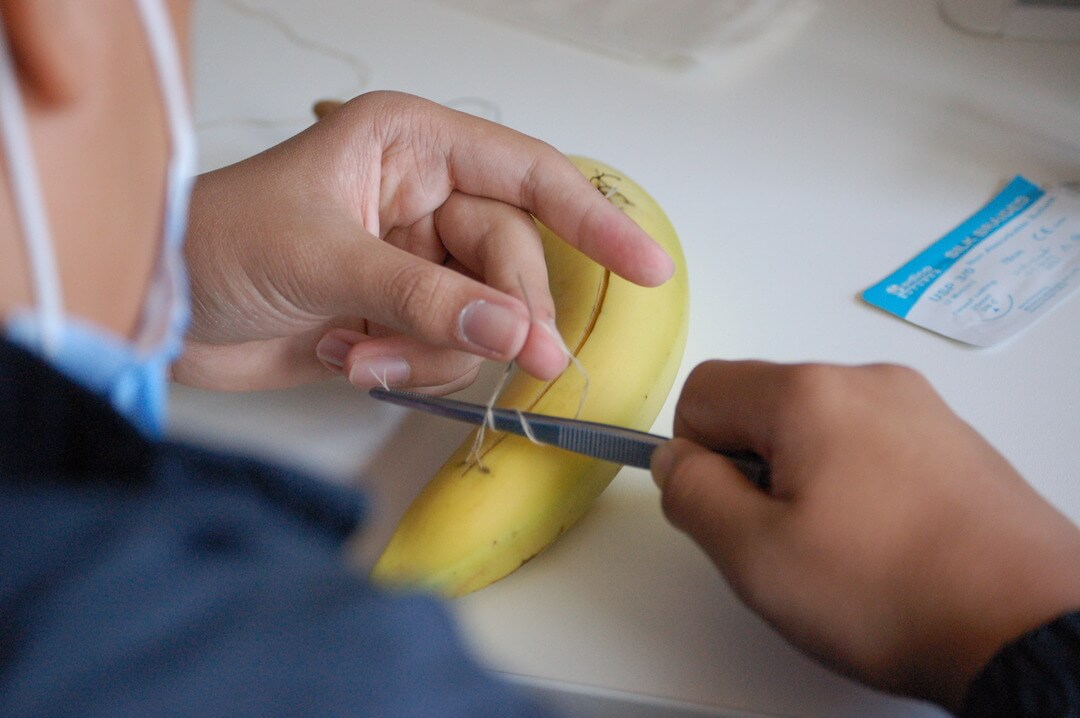How Is a Medicine Degree Structured?

A Medicine degree in the UK typically lasts five years.
You might be wondering exactly what it is that takes up all that time. How is a Medicine degree structured? What is intercalation anyway? We’ve put together the following blog to answer these questions (and more!)..
How long does a Medicine degree last in the UK?
If you begin your undergraduate degree at 18, straight after secondary school or sixth form, you’ll need to complete five years of medical study in the UK (not including intercalation – more on this below). This is two years longer than a standard UK undergraduate degree, and for good reason!
What to expect in Medical School
The actual structure of your medical degree will mostly depend on whether you are taking a traditional course or an integrated course. We’ve broken down each of these below, as it’s important to consider which option you’d prefer before you apply to medical school.
Traditional courses
A traditional course follows the way that medicine has been taught for centuries. You will have three years of pre-clinical study, which will take the form of lectures, seminars and tutorials or supervisions, just like students on any other undergraduate course. Then, during your fourth and fifth years, you’ll hit the wards and will start applying your learning in a clinical environment instead of in the classroom.
Generally speaking, Oxford and Cambridge are the only medical schools that still stick to an entirely traditional medical degree structure these days. If you want a purely traditional degree in the UK, they’re your best bet!
Integrated courses
Integrated courses take a more modern approach to medical study, and it’s a structure that has been gradually adopted by the majority of UK medical schools over recent decades. It’s a broad term but essentially it means that students receive a mix of clinical learning and traditional classroom learning from the very beginning of the degree.
You’ll still have lectures and seminars, but they’ll be mixed in with clinical placements from your first year, which often take place weekly or biweekly. This setup allows you to become more comfortable on the wards and start developing your practical skills straight off the bat.
Integrated courses also tend to make use of Case Based Learning (CBL) and Problem Based Learning (PBL), where you work in small groups to answer questions about cases that are relevant to your current lecture topics. This will prepare you for discussing patients’ progress in frequent Multidisciplinary Team Meetings (MDTs) once you’re qualified.
What are the different types of entry for Medicine degrees?
The structure of a Medicine degree will also vary depending on what type of entry you choose; not everyone does a standard five year undergraduate medical degree straight away! There are lots of different ways into studying medicine, from starting an intercalated degree when you’re 18 to returning to medical school as a graduate later in life.
Foundation years
Some universities will offer a foundation year. This is essentially an extra year of study that you complete before starting an undergraduate Medicine course.
Typically, a foundation year will give you a solid understanding of the scientific theory that underpins a standard Medicine degree, so they’re usually aimed at prospective medics who didn’t complete traditional science A-Levels (or an international equivalent).
Graduate entry
Graduate entry degrees allow you to join medical school after completing a different Bachelor’s degree. This is a great option for those who want to undertake a different degree before starting their medical career, or decide they want to study Medicine when they’re slightly older.
Graduate entry courses generally drop a year, so they only take four years of study and get you into practice that little bit faster!
Intercalation
The final important aspect of a Medicine degree’s structure to consider is intercalation. It’s essentially an extra, year-long programme within a Medicine degree that allows you to study another course for a year. At the end of the intercalated year, you’ll receive a Bachelor’s (or sometimes Master’s!) degree in the additional subject you chose to study.
At some universities, intercalation is mandatory, while others have it as an optional year that you can take if you’d like to. Either way, it normally falls between the third and fourth year of the medical degree, and will mean your total time studying before you graduate will be six years, rather than five.
What sort of courses can you take for medical intercalation?
The short answer to this is pretty much anything – it all depends on your university! Some medical schools encourage students to study something related to medicine for their intercalating year, while others give students free reign to choose anything that interests them.
It’s important to consider your reasons for choosing to intercalate before you decide on your subject. For example, some medics treat intercalation as a chance to pursue a passion outside of the regular curriculum, such as an arts subjecta.
Alternatively, other students will study tangentially related topics to widen their understanding of Public Health policy, or the history of Medicine. Finally, some students who have a very focused end goal may opt to take a directly related BSc; for example, future surgeons would benefit from an intercalated degree in anatomy.

Which Medicine degree structure is best for me?
As you can see, there are lots of different ways to get your Medicine degree. Deciding which approach will be the best for you depends on how you like to learn, whether you have other academic interests you’d like to pursue, and if you have particular universities in mind that you would like to apply to. As always, reading about other students’ experiences will be extremely valuable when it comes to informing your own decision.
A bonus medical school interview tip!
We’ll leave you with one final tip to help you at your medical school interviews! Universities are really proud of their curriculum, and they’ll usually mention details about course structure on their website or in their prospectus.
It’s worth thinking through which aspects of that specific university’s course (for example, an interesting intercalation topic or the appeal of a traditional structure) can be covered in a great answer to the interview question “Why do you want to go to this university?”.
So, now you know more about the structure of a Medicine degree, what should your next steps be?
Check out our Ultimate Guide to Studying Medicine to find out more about what it’s like to study Medicine.
Keen to try out studying Medicine in the UK for yourself? Take a look at our online Medicine programmes to get a taste of the subject, boost your application and receive first-hand application advice from your tutor.

By Louis Davenport
Louis is a third year medical student studying at the University of Bristol. Currently he is interested in epidemiology, global health and medical history. Outside of med school, he does his best to balance staying up to date on his reading and watch lists.
Ready to get a head start on your future?
Recommended articles
OxBright Tutors Share Their Top Tips for High School Graduates
Finishing high school can be a really intimidating juncture – you’re leaving the security of a routine you’ve followed for five plus years, and you’re faced with more options and less structure than ever before. Oh, and your decisions now can shape your future in a...
Which Career Is the Best Fit for Me?
Choosing your career path is one of the first big steps you’ll take as a young adult, so it can often be a daunting prospect. However, the possibilities are endless, and as long as you base your choices on your personal preferences, passions and interests, your...
How to Make a Study Schedule That Actually Works
Studying can sometimes feel like a daunting task, no matter how old you are or what level you’re studying at. You might be left thinking: How can I balance academics with my other commitments? How do I stay consistent with a study schedule? Is there a “good” or...



